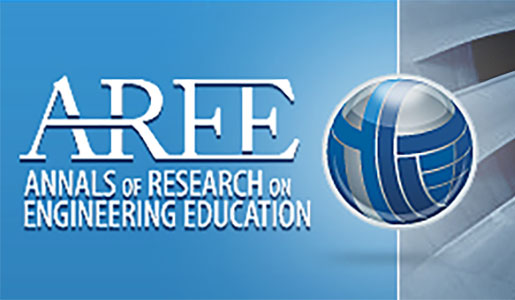Article: A Topical Analysis of Mechanical Engineering Curricula
Context
Unfortunately, engineering is not a popular major. According to the National Center for Education Statistics, the most attractive undergraduate major is business management and administrative services (19.3%), followed by social sciences and history (10.6%). Baccalaureates in engineering comprise only 5.1%; and certain groups are severely under-represented.
Unless we increase the proportion of students who choose to study engineering, we will find it impossible to meet the increasingly technical needs of business and other organizations in the public and private sectors. It is necessary to attract and retain more highly qualified students to the nation’s engineering schools. In particular, it is essential to attract and retain the untapped populations”>women and under-represented minorities. In the past, efforts to attract more students to engineering have focused on extracurricular enhancements and pedagogy (better teaching methods), but not on curriculum (actual course content). Our goal is to produce a curriculum which is more attractive to under-represented groups and the majority populations also, while retaining all salient technical material.
Our approach to revision of the undergraduate engineering curriculum involves six steps:
1. Determine what has been done previously that we can build upon.
2. Work with a team to examine and revise the core curriculum usually packed into the first couple of years of engineering programs.
3. Work with a team to examine and revise the material contained in courses taken by those in a specific engineering major (mechanical).
4. Pilot new courses at a variety of locations, with careful assessment of the impact on students and revision of the courses to achieve goals more completely.
5. Pilot entire degree programs at a variety of locations.
6. Disseminate successful curricula widely.
The article “A Topical Analysis of Mechanical Engineering Curricula” is part of step 3.
The research questions which we investigated are:
1. What is the body of knowledge that defines mechanical engineering undergraduate degrees?
2. How much do mechanical engineering degree programs differ from each other?
3. Is the mechanical engineering curriculum broad enough to attract a broad audience?
4. Are we teaching obsolete or unnecessary topics? Are we teaching all the necessary topics?
Our theoretical framework is that the curriculum will be more able to attract and retain a diverse community of students if it has greater linkages between fundamentals and applications, and between technical and nontechnical subjects; includes more teaming experiences; uses shorter critical path lengths; has more focus on the impact of engineering on the human experience; and promotes a general atmosphere of inclusion rather than exclusion.
Methodology
We compiled a database of the topics and subtopics required in the undergraduate mechanical engineering curriculum, attempting to be as narrow and specific as possible. We began with our own institution, obtaining syllabi for the required technical classes for a mechanical engineering BS degree. From the syllabi for those required courses, we extracted 281 separate topics and subtopics. We then repeated the process using the syllabi for required courses for a mechanical engineering baccalaureate at eight other academic institutions. The nine sets of curricula produced a list of 1,392 distinct topics. We recorded the frequency of occurrence of each topic, and analyzed the resulting data.
Findings
Dissecting a degree program into required topics is useful for curriculum reform, as it provides a baseline to study the curriculum at a level more finely grained than a course. While course titles vary very little from one engineering school to another, the topics covered within the courses vary quite a bit. Only 5% of the required 1,392 topics are common to the majority of the schools in our study. Those 69 topics constitute a de facto body of knowledge for the undergraduate mechanical engineering degree.
Many of the topics required by engineering schools are not essential. In particular, many topics taught in calculus courses are not necessary for mechanical engineers, and there is little consensus of what computer topics should be required. Perhaps no courses should be eliminated, but many topics within the courses can be. This suggests that with careful editing, today’s overcrowded core curriculum can be handled in four years or less.
Examples of non-essential topics include Abbe errors, alpha prototypes, and gamma distributions. Examples of unnecessary calculus topics include conics, Cramer’s rule and transcendental functions. Examples of questionable computer topics include applets, derived classes, and mobile code.
Our analysis indicates that the current mechanical engineering curriculum covers ABET’s technical skills much better than its professional skills. The schools we surveyed require some of the professional skills, but the development of these skills is very uneven (haphazard, in some cases).
Based on the individual topics required, today’s typical ME curriculum is 45% engineering, 18% mathematics including calculus, 15% physics, 12% chemistry, 4% computer science, 2% communication, 2% statistics, 1% economics, 1% ethics, and 0% biology. The current curriculum displays a heavy slant toward mechanics and thermodynamics, reflecting ME’s classical origins. However, the classical curriculum may not be keeping up with the growing complexity and interdisciplinary foundations of engineered systems. According to ASME’s Vision of the Future, the mechanical engineering discipline is changing “from the branch of engineering that encompasses the generation and application of heat and mechanical power and the production, design and use of machines and tools to one which addresses societal concerns through analysis, design, and manufacture of systems at all size scales.” Thus, the topics which comprise the current curriculum may not be broad enough to attract a diverse, contemporary audience.
It would seem that we are requiring some non-essential topics, but not teaching all the necessary topics. Our topic analysis indicates that we are not teaching enough biology, economics, or ethics, despite the convergence of biology with engineering, ABET’s requirement for understanding of ethical responsibility, and the obvious interest of undergraduates in business administration. Topics which might be added to the ME canon include biomechanics, microfluids, multifunctional materials, nanomicromechanics, nanotechnology, non-Newtonian fluids, pharmaceutical manufacturing, recycling, sustainability and system integration.
Recommendations
It should be possible to craft a more efficient mechanical engineering curriculum by eliminating unnecessary topics. Elimination of legacy or low-frequency topics in the ME curriculum will make room for topics arising from new and rapidly emerging technologies and disciplines.
The ABET professional skills are particularly important because of changing technology, but our analysis indicates these skills are currently developed in an uneven way; thus, there is a need to strengthen them – to ensure they are not left to chance. These skills include teamwork, ethics, communication, the impact of engineering on society, and knowledge of contemporary issues.
The current ME degree is heavily focused on engineering practice and engineering graduate school, and much less on leading a business or graduate school in medicine or law. Yet, when asked why they entered engineering, female respondents in the Women’s Experience in College Engineering Project mentioned the value of an engineering degree for entering business, medicine, and other fields. To attract a diverse audience, therefore, it may be necessary to broaden the ME baccalaureate to be a “launching pad” to several different professions – engineering, but also medicine, law and business. [1]
Acknowledgements
We wish to acknowledge the cooperation of our seven partner institutions, and the National Science Foundation for its support of our curriculum redesign work through a Department-Level Curriculum Reform grant.
[1] Carmi and Aung 1993
Author 1:Jeffrey P. Jarosz [email protected]
Author 2: Ilene J. Busch-Vishniac [email protected]
Article Link: www.asee.org

